1. Grant of Bail in India – Polity
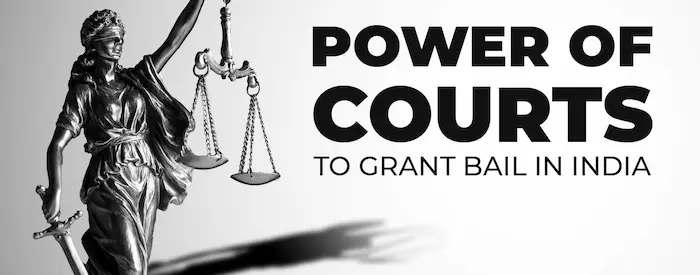
Why in News?
The US President’s recent decision to halt federal funding for cashless bail systems has reignited global discussions about bail fairness, especially for economically disadvantaged individuals. This has parallels in the Indian context, where the bail system continues to face criticism for being unjust and inaccessible to the poor.
Key Takeaways
What is Cashless Bail?
- A system that removes the need for upfront cash.
- Relies on non-financial conditions such as GPS monitoring or written assurances of court appearance.
- Aims to ensure that economic status does not determine freedom during the trial phase.
Issue with Traditional Cash Bail:
- It disproportionately impacts the poor.
- Many accused of minor offenses remain in custody because they cannot afford bail.
Bail Provisions in India under Bharatiya Nagarik Suraksha Sanhita (BNSS), 2023)
Types of Bail:
| Type of Bail | Description |
|---|---|
| Regular Bail | Granted post-arrest. For bailable offences – a right (Sec. 478); for non-bailable – court’s discretion (Secs. 480, 483). |
| Anticipatory Bail | Applied before arrest in non-bailable offences (Sec. 482). Includes conditions to prevent interference with the investigation. |
| Interim Bail | Temporary bail granted until the regular or anticipatory bail decision is made. |
| Statutory/Default Bail | Bail granted if chargesheet not filed within the prescribed time limit (Sec. 187). |
Bail Mechanisms in Practice:
| Mechanism | Description |
|---|---|
| Bond | Cash deposit by the accused, refunded post-trial unless bail terms are violated. |
| Bail Bond (Surety) | Third-party guarantee by friend/family/employer. Financial status and residence verified. |
| Personal Recognisance Bond (PR Bond) | No upfront payment, but a commitment to pay later if needed. |
Challenges in India’s Bail System
- Undertrial Injustice: Many remain jailed for minor offences due to inability to afford even minimal bail amounts (as low as ₹5,000).
- Prison Overcrowding: E.g., Maharashtra reported 12,000+ extra prisoners (as of July 2025).
- Judicial Criticism:
- 268th Law Commission Report (2017): Called monetary bail discriminatory and a violation of Article 14 & Article 21 (right to equality and fair trial).
- Supreme Court Guidelines (2023): If an accused remains in jail for over a week after being granted bail, the Jail Superintendent must inform the District Legal Services Authority (DLSA) to facilitate release.
Reform Measures under BNSS (2023)
- Proactive Role for Jail Authorities: They are required to apply for bail on behalf of undertrial prisoners who’ve completed a specified portion of their maximum sentence.
- Exceptions: Does not apply in cases involving life imprisonment or death penalty.
Implications & Analysis
- Human Rights Angle: Denying bail due to poverty violates Article 21 – Right to Life & Liberty.
- Judicial Efficiency: Eases the burden on courts and prisons.
- Access to Justice: Promotes legal aid and reduces economic discrimination.
- Systemic Reform: Highlights the need for a shift from punitive to reformative criminal justice.
Exam Connect – Possible Questions
Prelims
- Which of the following is true regarding Anticipatory Bail under the Bharatiya Nagarik Suraksha Sanhita (BNSS), 2023?
A. It can be granted only after arrest
B. It is available for both bailable and non-bailable offences
C. It is granted before arrest for non-bailable offences
D. It does not require court approval
Correct Answer: C. It is granted before arrest for non-bailable offences - Which authority must be informed if an accused remains in jail for more than a week after being granted bail, as per Supreme Court Guidelines (2023)?
A. NHRC
B.State High Court
C.Ministry of Home Affairs
D. District Legal Services Authority
Correct Answer: D. District Legal Services Authority
Mains
1.”Prison reforms must begin with bail reforms.” Analyze this statement in light of the overcrowding of prisons and the large number of undertrials in India.
2.”The Indian bail system disproportionately affects the poor, making it a tool of injustice rather than justice.” Critically evaluate in the context of recent reforms under BNSS 2023.
3.Discuss the significance of anticipatory and default bail provisions in safeguarding individual liberty in a democratic society.
2. National Disaster Management Authority (NDMA) – Polity
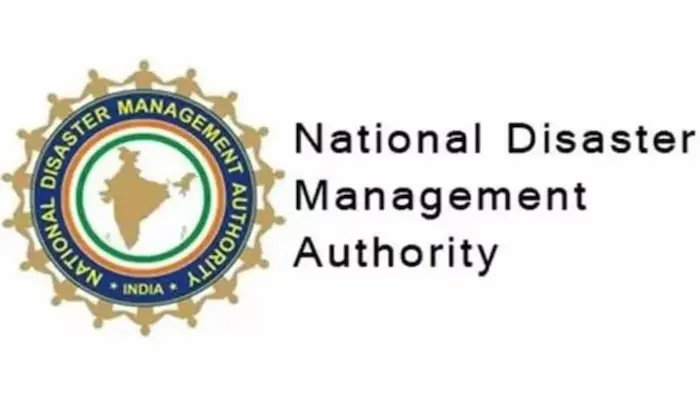
Why in News?
The Prime Minister of India has recently:
- Nominated two new members to the National Disaster Management Authority (NDMA).
- Re-nominated three existing members to continue for another three-year term.
This development highlights the ongoing evolution of India’s disaster management framework.
Key Takeaways
What is the NDMA?
- NDMA is the apex statutory body for disaster management in India.
- It was established under the Disaster Management Act, 2005.
- The Prime Minister of India serves as its Chairperson.
Establishment & Legal Backing
| Aspect | Detail |
|---|---|
| Established under | Disaster Management Act, 2005 |
| Status | Statutory Body (under Ministry of Home Affairs) |
| Chairperson | Prime Minister of India |
| Legal Mandate | To lay down policies, plans, and guidelines for disaster risk reduction and response across India |
Objectives of NDMA
- Policy Formulation: Create national-level disaster management policies and plans.
- Implementation Oversight: Ensure implementation by central ministries and state governments.
- Coordination: Act as the central coordinating body during disasters.
- Capacity Building: Develop infrastructure and systems for disaster preparedness and mitigation.
Vision
“To build a safer and disaster-resilient India by a holistic, proactive, technology-driven and sustainable development strategy involving all stakeholders and fostering a culture of prevention, preparedness and mitigation.”
Organizational Structure
| Component | Details |
|---|---|
| Chairperson | Prime Minister of India |
| Vice-Chairperson | Rank equivalent to Cabinet Minister |
| Members | Up to 8, with rank of Minister of State |
| Divisions | Policy & Plans, Mitigation, Operations, Communication, etc. |
| Administrative Link | Ministry of Home Affairs |
Functions and Responsibilities
- Policy Framing – Lays down national disaster management policies and guidelines.
- Plan Approval – Approves the National Disaster Management Plan and other plans.
- Coordination – Coordinates disaster response across central and state agencies.
- Funding Recommendations – Suggests financial packages for relief and mitigation.
- Capacity Building – Promotes disaster preparedness and awareness through training and outreach.
Broader Context & Implications
- Climate Change & Rising Disasters: India’s increased disaster frequency demands robust institutional response.
- NDMA’s Coordination Role: Ensures inter-agency synergy during national calamities.
- Challenges:
- Delays in response during some disasters (e.g., 2023 floods in North India).
- Coordination gaps between NDMA and State Disaster Management Authorities (SDMAs).
Exam Connect – Possible Questions
Prelims
- Which of the following statements about the National Disaster Management Authority (NDMA) is correct?
A. It is a constitutional body under Article 355
B. It functions under the Ministry of Environment
C.The Prime Minister is its Chairperson
D. It is headed by the Home Minister of India
Correct Answer: C.The Prime Minister is its Chairperson
- The Disaster Management Act, 2005 provides for which of the following?
1.Establishment of NDMA
2.Creation of State Disaster Management Authorities (SDMAs)
3.Appointment of District Disaster Management Authorities (DDMAs)
A.1 only
B. 1 and 2 only
C. 1 and 3 only
D.1, 2 and 3
Correct Answer: D.1, 2 and 3
Mains
- Discuss the role of the National Disaster Management Authority (NDMA) in building disaster resilience in India. How effective has it been in recent disaster responses?
- Evaluate the institutional framework for disaster management in India. Suggest measures to improve coordination between national and state-level authorities.
- “A proactive approach to disaster management can save lives, infrastructure, and the economy.” Discuss in the context of the Disaster Management Act, 2005 and NDMA’s functioning.
3. Rising Disposable Income of Indian Households in 2025 – Economy
Why in News?
Chief Economic Advisor V. Anantha Nageswaran announced that the disposable income of Indian households is projected to rise significantly in 2025 compared to 2024.
This rise is attributed to:
- Easing inflation
- Direct tax cuts announced in the 2025 Union Budget
- Expected GST rationalization
These factors are likely to stimulate consumption, support economic growth, and enhance household financial security.
Key Takeaways
What is Disposable Income?
Disposable Income = Total Income – Taxes
- It represents net earnings available to households for spending and saving.
- Used for daily expenses like food, housing, healthcare, and education.
Impact of Inflation on Disposable Income
- High inflation erodes purchasing power.
- Even with stable income, real disposable income falls during inflation, leading to:
- Reduced spending on non-essential goods
- Lower savings
- Decline in long-term investments
- Slower economic growth
Conversely, when inflation eases:
- Households have more real income
- Encourages spending, saving, and investment
- Boosts business growth and employment
Economic Impact of Rising Disposable Income
| Impact Area | Effect |
|---|---|
| Consumption | Increase in consumer demand across goods and services |
| Savings | Higher potential for household savings and long-term investments |
| Investment | Stimulates private sector due to higher demand |
| Employment | Encourages hiring as businesses expand |
| GDP Growth | Directly contributes to economic expansion |
| Economic Resilience | Builds household and national capacity to face external shocks |
Current Economic Context (2025)
- GDP Growth (Apr–Jun 2025): 7.8%, highest in five quarters
- Tax Cuts: Union Budget 2025 includes direct income tax cuts (revenue loss of ₹1 lakh crore)
- GST Rationalization: Aimed at reducing tax burden and spurring demand
- Digital Economy:
- UPI merchant payments indicate strong consumption trends
- Urban demand possibly underestimated in traditional surveys
Urban vs Rural Demand Trends
| Sector | Current Status |
|---|---|
| Urban Demand | Mixed: Strong in hospitality & trade; weak in housing & durables |
| Rural Demand | Resilient due to good monsoon and strong agricultural base |
External Threats to Growth
- Tariff Hike by US (Aug 27, 2025):
- Tariffs on Indian goods raised to 50% (25% duty + 25% penalty linked to India-Russia oil ties)
- Risk to labour-intensive export sectors like textiles
- Potential impact: Jobs loss → Lower wages → Reduced consumption → Lower private investment
Government’s Policy Response:
- Boost Domestic Demand:
- Income tax cuts
- GST rationalization to control inflation
- Diversify Export Markets:
- Reduce dependency on US
- Improve domestic value chains and resilience
Broader Analysis
- Rising disposable income is a positive economic signal.
- However, external trade risks (e.g., US tariffs) can neutralize gains.
- Domestic policies must balance short-term relief (tax cuts) with long-term strategies (export diversification, infrastructure investment).
Exam Connect – Possible Questions
Prelims
- Which of the following would NOT lead to an increase in disposable income?
A. Reduction in personal income tax rates
B. Increase in inflation
C. Rationalization of GST rates
D. Government subsidy on essential goods
Correct Answer: B. Increase in inflation
- What is the correct formula for calculating disposable income?
A. Total Income – Interest payments
B. Total Income – Subsidies
C.Total Income – Indirect Taxes
D. Total Income – Direct Taxes
Correct Answer: D. Total Income – Direct Taxes
Mains
- “An increase in disposable income can fuel economic growth, but its impact depends on inflation and global economic conditions.” Discuss with reference to the Indian economy in 2025.
- Examine the role of fiscal policy tools such as tax cuts and GST rationalization in managing household consumption and economic growth.
- India’s economy is increasingly vulnerable to external shocks. Evaluate the effectiveness of the government’s two-pronged strategy to promote domestic consumption and insulate against global risks.
4. LUPEX Mission Overview – Science and Technology
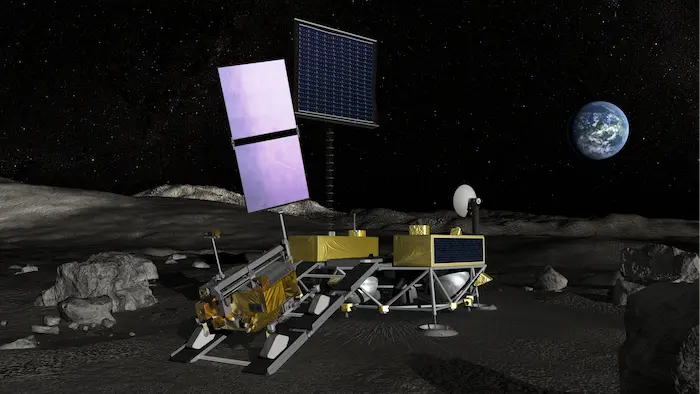
Why in News?
The Prime Minister of India has recently acknowledged the collaboration between the Indian Space Research Organisation (ISRO) and the Japan Aerospace Exploration Agency (JAXA) for the upcoming Chandrayaan-5 mission, which forms a key part of the LUPEX (Lunar Polar Exploration) program.
Key Takeaways
- LUPEX is a joint lunar exploration mission by ISRO (India) and JAXA (Japan).
- Primary focus: Exploration of the Moon’s south polar region, believed to contain water ice.
- Aims to:
- Search for water and volatile elements on the lunar surface.
- Test advanced technologies for vehicular transport and lunar night survival.
- The mission will consist of a lander and a rover.
Mission Components & Responsibilities
| Component | Agency | Role & Details |
|---|---|---|
| Lander | JAXA | Delivers the rover to the Moon’s surface |
| Rover | JAXA | Developed and operated by JAXA; will explore and analyze the lunar regolith |
| Instruments | ISRO, JAXA, NASA, ESA | Multi-agency payloads for data collection and analysis |
Rover Capabilities & Scientific Objectives
- Autonomous Navigation: Navigates the lunar terrain without real-time instructions.
- Soil Sampling: Equipped with a drill to extract subsurface samples.
- Water Detection:
- Measures moisture levels in the lunar regolith (soil).
- Analyzes the presence of ice crystals and volatile compounds.
- High-end Technologies:
- Efficient power systems for operating during lunar nights.
- Advanced driving systems, thermal control, and dust mitigation.
Significance of International Collaboration
- Instruments aboard the LUPEX rover will be contributed by:
- 🇮🇳 ISRO (India)
- 🇯🇵 JAXA (Japan)
- 🇺🇸 NASA (United States)
- 🇪🇺 ESA (European Space Agency)
This reflects global cooperation in space technology and shared interest in resource mapping on the Moon for future human missions.
Strategic Significance of LUPEX
Scientific Importance:
- South Polar Region of the Moon:
- Permanently shadowed craters may hold frozen water, a key resource for sustaining future lunar bases.
- Provides crucial data for future manned lunar missions and deep-space travel.
Technological Advancement:
- Tests mobility, autonomy, and survivability in extreme lunar conditions.
- Demonstrates India’s capability in space robotics and deep-space navigation.
Geopolitical Edge:
- Boosts India’s standing in the international space community.
- Enhances ISRO’s portfolio of high-impact missions after Chandrayaan-2 and Chandrayaan-3.
Exam Connect – Possible Questions
Prelims
- Which of the following statements about LUPEX are correct?
1. It is a joint space mission by India and Russia.
2.The mission aims to explore the Moon’s southern polar region.
3. The rover will be developed and operated by JAXA.
4. The LUPEX rover will carry instruments from ISRO, JAXA, NASA, and ESA.
A. 1, 2, and 3 only
B. 2, 3, and 4 only
C.1 and 2 only
D. 1, 2, 3, and 4
Correct Answer: B. 2, 3, and 4 only
- What is the main scientific objective of the LUPEX mission?
A.To launch India’s first space station
B.To explore Martian weather patterns
C.To search for water and volatiles in the Moon’s southern polar region
D. To test human endurance on the lunar surface
Correct Answer: C.To search for water and volatiles in the Moon’s southern polar region
Mains
- Discuss the objectives and significance of the LUPEX mission. How does it reflect the future direction of space exploration and international cooperation?
- “Water is the critical enabler of long-term lunar habitation.” Examine how the LUPEX mission contributes to this vision.
- Evaluate India’s evolving role in collaborative space exploration missions. Use LUPEX as a case study to highlight the strengths and challenges.
5. Extended Range Attack Munitions (ERAM) Missile – Defence & Security
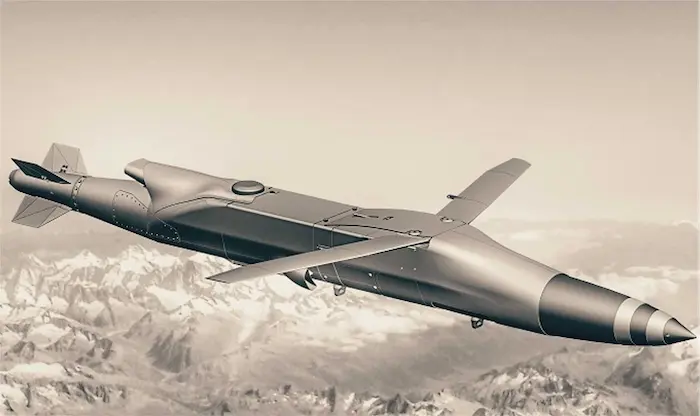
Why in News?
The United States, under the Trump administration, has approved the sale of 3,350 Extended Range Attack Munitions (ERAM) missiles to Ukraine.
This reflects a strategic escalation in military support amid the ongoing Russia–Ukraine conflict.
Key Takeaways
What are ERAM Missiles?
- ERAM (Extended Range Attack Munition) refers to air-launched, precision-guided missiles designed for long-range, high-accuracy strikes.
- They offer the explosive power of a heavy bomb with the reach and precision of a cruise missile.
Key Features of ERAM
| Feature | Description |
|---|---|
| Range | 240 – 450 km depending on flight profile |
| Warhead | 500-pound (approx. 227 kg) high-explosive warhead; effective against bunkers, depots, etc. |
| Accuracy | Within ~10 meters, even in GPS-denied environments (resistant to jamming) |
| Guidance System | Combination of GPS, Inertial Navigation System (INS), and terminal seeker |
| Platforms | Compatible with modern fighter jets like F-16, and possibly Soviet-era aircraft with modifications |
| Design | Compact, modular, and suitable for mass production and multi-platform use |
Strategic Advantages
- Stand-off Capability: Enables strikes from long distances, keeping aircraft out of enemy air-defense range.
- Target Versatility: Effective against hardened and mobile targets (e.g., fuel depots, bunkers, ammo dumps).
- Low Cost, High Efficiency: Designed for cost-effective scaling for battlefield saturation.
Geopolitical Context
- Reflects U.S. military commitment to Ukraine amid ongoing war with Russia.
- Enhances Ukraine’s strike capability without direct Western troop involvement.
- Sends a signal of technological and strategic deterrence to adversaries.
- Could escalate tensions and lead to further militarization in Eastern Europe.
Broader Analysis
- Modern conflicts increasingly rely on precision, long-range, and smart munitions.
- India must focus on:
- Indigenous development of affordable ERAM-like systems
- Enhancing interoperability with multiple aircraft platforms
- Improving resistance to electronic warfare and GPS jamming
Exam Connect – Possible Questions
Prelims
- Which of the following technologies are typically used in modern Extended Range Attack Munitions (ERAM)?
1. Inertial Navigation System (INS)
2.GPS guidance
3. Infrared terminal seeker
4.Solid-fuel ramjet propulsion
A. 1, 2 and 3 only
B. 2, 3 and 4 only
C.1 and 4 only
D. All of the above
Correct Answer: A. 1, 2 and 3 only
(Explanation: ERAM typically uses INS, GPS, and terminal seekers. Ramjets are used in high-speed missiles like BrahMos, not in ERAM.)
- Which of the following correctly describes the term “stand-off missile”?
A. A missile designed to intercept satellites
B. A missile that can be fired from a distance, outside the range of enemy defenses
C.A missile launched from underwater platforms
D. A nuclear-armed intercontinental missile
Correct Answer: B. A missile that can be fired from a distance, outside the range of enemy defenses
Mains
- Discuss the strategic advantages of precision-guided, stand-off munitions like ERAM in modern warfare. How should India respond to such technological shifts?
- The increasing use of smart munitions is transforming the nature of air power. Evaluate the implications for India’s defence planning and procurement strategy.
- Critically analyze the impact of arms transfers, like the ERAM missile sale to Ukraine, on regional security and global power dynamics.
6. Detoxifying India’s Entrance Examination System – Governance
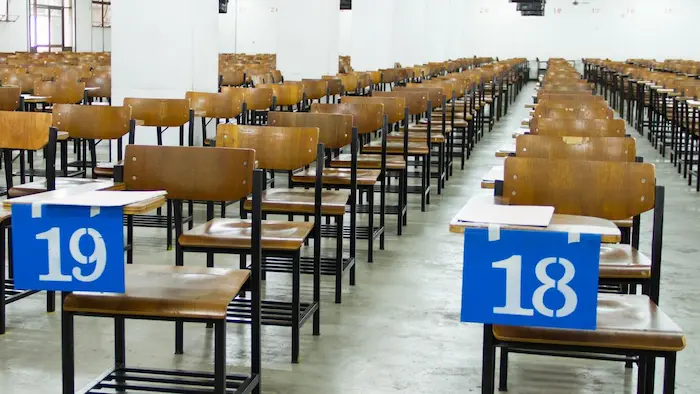
Why in News?
With nearly 70 lakh students competing each year for limited undergraduate seats, India’s entrance examination system has become a source of severe mental stress, economic burden, and even student suicides.
Rising criticism of this model has triggered a national debate on how to make admissions fairer, more inclusive, and less stressful.
Key Takeaways
What’s the Problem?
- Extreme Competition: Pressure to qualify for exams like NEET, JEE, etc., causes widespread mental health issues.
- Coaching Dependency: A booming ₹30,000+ crore coaching industry caters to exam aspirants, often charging ₹6–7 lakh per student.
- Equity Concerns: Affluent urban students have disproportionate access to coaching, disadvantaging rural and low-income students.
- Mental Health Crisis: Suicides in coaching hubs like Kota (Rajasthan) highlight the psychological toll on students.
Core Issues
1. Illusion of Meritocracy
- The assumption that exams reflect pure merit is flawed.
- Wealth, access to coaching, parental education, and location create unequal starting points.
2. Economic Exploitation
- Many families borrow or mortgage assets to pay for coaching.
- Education becomes commercialized, undermining its social value.
3. Academic Burnout
- Students begin intensive coaching as early as Class 8 or 9.
- Pressure to perform leads to:
- Stress, anxiety, depression
- Reduced creativity and social skills
- Dropout from mainstream schooling
Global Models for Reference
| Country | Reform Introduced |
|---|---|
| Netherlands | Weighted Lottery System – Randomized admissions, with weightage for performance and diversity |
| China | Restrictions on Private Tutoring to reduce pressure and inequality |
Proposed Reforms for India
| Reform Idea | Description |
|---|---|
| Class 12-Based Admissions | Shift focus to school board exams instead of separate entrance tests |
| Weighted Lottery System | Blend academic merit with chance to ensure fairness and reduce pressure |
| Cap on Coaching Fees | Regulate private coaching sector to reduce economic exploitation |
| Mental Health Interventions | Mandatory counselling services at schools and coaching centers |
| Affirmative Action Integration | Combine new models with existing reservation policies for social equity |
Why It Matters
- Student suicides are a governance failure, not just a personal tragedy.
- Education must be a level-playing field, not a race of privilege.
- A toxic system harms India’s demographic dividend and weakens human capital development.
Broader Implications
- Societal Impact: The system reinforces class and caste divides.
- Governance Gap: Lack of regulation in private education sector.
- Policy Dilemma: Balancing academic merit with mental well-being and accessibility.
Exam Connect – Possible Questions
Prelims
- Which of the following statements about India’s entrance exam ecosystem are correct?
1.NEET and JEE are the only entrance exams regulated by the central government.
2. India’s coaching industry is largely unregulated.
3. Weighted lottery systems are currently in use in some Indian universities.
4.The Netherlands uses a lottery system for some educational admissions.
A. 2 and 4 only
B. 1, 2, and 3 only
C. 1 and 3 only
D. 1, 2, and 4 only
Correct Answer: A. 2 and 4 only
(Explanation: 1 is incorrect — many exams are regulated by autonomous bodies; 3 is incorrect — India does not yet implement weighted lottery systems.)
- Which of the following is a proposed benefit of moving to a lottery-based admission system?
A. Increases hyper-competition
B. Favors urban students
C. Reduces exam pressure and increases equity
D. Replaces reservation policies
Correct Answer: C. Reduces exam pressure and increases equity
Mains
- “The entrance exam system in India has created more stress than success.” Examine the need for structural reforms in light of recent debates around coaching and meritocracy.
- Discuss how India’s entrance exam model contributes to social inequity. Suggest measures to make higher education admissions more inclusive and student-friendly.
- “Fair access to education must consider not just merit, but mental health and social background.” Critically evaluate with reference to India’s current education admission system.

